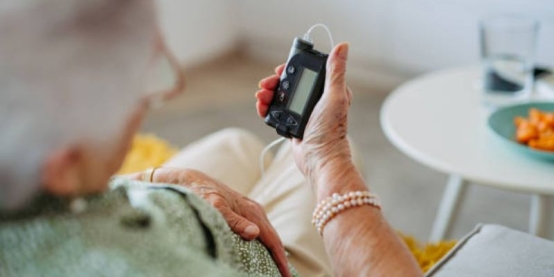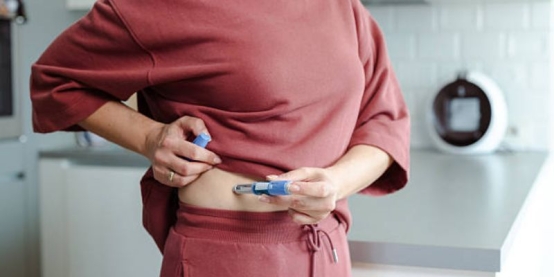Insulin Pump vs. Injections: Which Is Better for You?
Choosing how to receive insulin is one of the most important decisions a person with diabetes faces. Insulin therapy is essential for many people—especially those with type 1 diabetes and some with type 2—but how you deliver insulin can affect blood sugar control, daily life, costs, and risks.
Both insulin pumps and multiple daily injections (MDI) aim to keep your blood glucose in a safe range; the right choice depends on your health goals, preferences, budget, and support system.
Quick Overview: How Each Method Works
Insulin Pump (Continuous Subcutaneous Insulin Infusion, CSII)
A small, programmable device delivers rapid-acting insulin continuously (basal rate) and in boluses at mealtime or to correct high glucose.
The pump connects via a thin cannula or infusion set placed under the skin (abdomen, arm, or other approved site).
Many modern pumps integrate with a continuous glucose monitor (CGM), allowing more automated adjustments.

Injections (Multiple Daily Injections, MDI)
Users give insulin by syringe or insulin pen.
Typically involves one or more injections of long-acting (basal) insulin per day, plus short-acting (bolus) insulin before meals.
Requires planning: calculating doses, timing injections, and rotating sites to avoid complications.
Blood Sugar Control and Accuracy
Glucose Stability & HbA1c Outcomes
In many studies, insulin pumps offer tighter control, particularly overnight, by allowing fine basal rate adjustments and insulin suspension during hypoglycemia risk.
A well-known trial of sensor-augmented pump therapy (pump + CGM) showed significant improvement in HbA1c compared to injection therapy.
Real-world retrospective data from type 1 diabetes patients in China found CSII users had lower HbA1c, more time in range, and lower glucose variability than MDI users.
However, not all gains are universal: some randomized trials (e.g. the REPOSE study) showed both pump and injections produced clinically meaningful and lasting HbA1c reductions, and no large difference in severe hypoglycemia when both were done well.
Risks: Hypoglycemia, Missed Doses, “Stacking”
Hypoglycemia (low blood sugar): Pump users sometimes achieve lower lows if basal settings are too aggressive or if bolus overlaps with insulin still active (“stacking”).
However, pumps with predictive suspension features can reduce severe hypoglycemia.
Missed doses or mechanical failure: If a pump malfunctions or the infusion site is blocked, insulin delivery stops, which can lead to hyperglycemia or diabetic ketoacidosis (DKA).
Injection risks: If you skip or delay injections, or miscalculate, blood sugar may rise. Repeated injections in the same site can create lipohypertrophy (fatty lumps) that reduce insulin absorption.
In short: a pump can offer finer control and reduce variability, but only if managed carefully.
Lifestyle and Convenience
Daily Routine & Flexibility
Meals & snacking: Pump users can deliver a bolus quickly before or even during meals or snacks. MDI users must time injections and sometimes over- or under-estimate.
Exercise & sleep: Pumps can be adjusted (temporary basal reductions) during exercise; some allow suspending insulin overnight if a low is predicted.
Night management: Pumps can adapt basal rates overnight to meet changing needs (e.g., dawn phenomenon).
Discretion: A small pump can be worn discreetly under clothing. But to some, wearing a device 24/7 is a constant reminder.
Travel & activity: Pump users may need to disconnect or secure the device (e.g., during swimming or contact sports). Injections require carrying insulin pens, vials, needles, and sharps disposal, which can be bulky or cumbersome.
Public, Work, School
Some people feel injections draw attention (drawing a syringe in public, explaining). Pumpers might prefer touching their abdomen or accessing a small pump quietly.
Children or those in settings with restrictions (school, formal work) might prefer simplicity (injections) or pump depending on support structure.
Cost and Insurance Coverage
Upfront and Ongoing Costs
Pumps and associated supplies (infusion sets, reservoirs, batteries, possible CGM) can carry a high upfront and ongoing cost.
One cost-effectiveness study found that over 28 weeks, combined CGM + pump therapy cost significantly more per person ($8,272) than CGM + injections ($5,623)—mostly due to pump expenses.

In many countries, insurance covers part of or full pump costs. For example, Medicare in the U.S. may treat an external pump as durable medical equipment and cover it (with subsidies) if criteria are met.
Some pump manufacturers (e.g. Tandem) report working with insurance plans to reduce out-of-pocket costs (e.g. Medicare covering ~80%) in certain regions.
In contrast, injections (vials, pens, needles) usually cost less per month, though chronic use adds up.
Insurance Variability & Cost as a Factor
Many patients choose MDI simply because their insurer does not cover pumps or covers only partially.
In low- and middle-income settings, poor coverage or out-of-pocket burden often makes injections the default.
Cost often influences choice even when a pump would offer clinical advantage.
Maintenance and Learning Curve
Pump — Learning and Technical Maintenance
Starting pump therapy involves extensive training: setting basal and bolus rates, adjusting for meals, activity, or illness.
Users must change infusion sites every 2–3 days (or according to manufacturer), clean connections, check for kinks or occlusions.
Troubleshooting (occlusion alarms, pump software errors, infusion site skin issues) is part of everyday life.
Regular follow-ups with healthcare team needed to fine-tune settings.
Injections — Simpler but Requires Discipline
MDI is more straightforward: inject basal and inject boluses.
Less hardware means fewer mechanical failures.
You must schedule injections, carry supplies, rotate injection sites, and constantly calculate dose changes manually.
Over time, many users become adept at dose adjustment, but abrupt changes (stress, illness, travel) pose risks.
Both methods demand time, attention, and adherence—but pumps tend to require a steeper learning curve.
Suitability: Who Should Use Which?
Pump May Suit
People with type 1 diabetes, especially those with erratic schedules (shift work, frequent travel).
Those seeking tighter glucose control, especially overnight, or facing frequent hypoglycemia.
Users comfortable with technology, alarms, and device maintenance.
Younger users who may benefit from flexibility in age of eating, play, or school schedule.
Injections May Suit
Those with type 2 diabetes using insulin who prefer a low-tech option.
People in regions with poor pump availability or where insurance doesn’t cover.
Users who prefer fewer devices attached to the body or simpler routines.
Older adults or those with less manual dexterity—though pens can help ease injection technique.
Special Populations: Pediatrics & Elderly
Children: Pumps allow flexibility in mealtime timing, but require caregiver oversight.
Elderly: Injections may be easier if technology is overwhelming; though pump may be beneficial if someone can support and monitor it.
Adolescents: Pumps are often preferred for flexibility during variable eating and activity habits.
Risks and Potential Complications
Pump-Related Risks
Device malfunction or battery failure can interrupt insulin delivery—risking hyperglycemia or DKA.
Infusion site infections or skin irritation.
Risk of undetected occlusion or dislodgment.
If settings are wrong, more frequent hypoglycemia or hyperglycemia.
Injection-Related Risks
Lipohypertrophy (fatty lumps) if injection sites aren’t rotated; reduces insulin absorption.
Missed or delayed injections leading to elevated glucose.
Dose miscalculations.
More skin punctures and associated discomfort.
Prevention Tips
For pumps: always carry backup supplies, monitor infusion sites carefully, set alarms, and check for signs of malfunction.
For injections: rotate injection sites, use calibrated pens or syringes, keep a schedule, and monitor frequently.
In both cases: maintain regular follow-up, log glucose and insulin data, and communicate with your diabetes care team promptly about trends.

Real-World Feedback: What Patients Say
Many users report greater freedom and flexibility with a pump—being able to snack, vary schedule, or skip “routine” structure.
Some find the constant presence of a device cumbersome or psychologically burdensome.
One survey noted that while the pump gave tighter control, users sometimes missed the simplicity of injections.
Others cite supply interruptions (faulty infusion sets) or skin irritation as real frustrations.
In threads and forums, people often say: “My pump gives me more peace at night,” or “I hated injecting multiple times a day but also didn’t love carrying a pump on me 24/7.”
Such mixed real-user sentiment emphasizes that “better” is highly individual.
How to Decide With Your Healthcare Provider
When choosing, consider the following with your endocrinologist or diabetes educator:
Your blood sugar goals, such as HbA1c targets, variability, and hypoglycemia risk.
Your budget, insurance or subsidy availability, and long-term costs.
Your comfort with technology, alarms, troubleshooting, and self-management.
Your daily routine: variable schedule? frequent travel? irregular meals?
The support network: will someone help you manage pump settings or backup plans?
Consider hybrid options: smart pens, simplified patch pumps, or closed-loop systems (pump + algorithm) that reduce user burden.
Dive into published studies, ask your provider about expected outcomes in your scenario, and consider trialing one method for a period before committing.
Key Takeaway
There is no one-size-fits-all winner in the insulin pump vs. injections debate. Each method has strong advantages and notable drawbacks. A pump may offer finer control, more flexibility, and a modern feel—but at higher cost, complexity, and maintenance burden. Injections are straightforward, more affordable, and time-tested, though less adaptable to moment-to-moment changes.
The best insulin delivery method is the one that helps you maintain stable blood sugar while fitting comfortably and sustainably into your life. Choose with your care team, review data, test if possible—and pick the path that supports your long-term health and daily well-being.
Sources